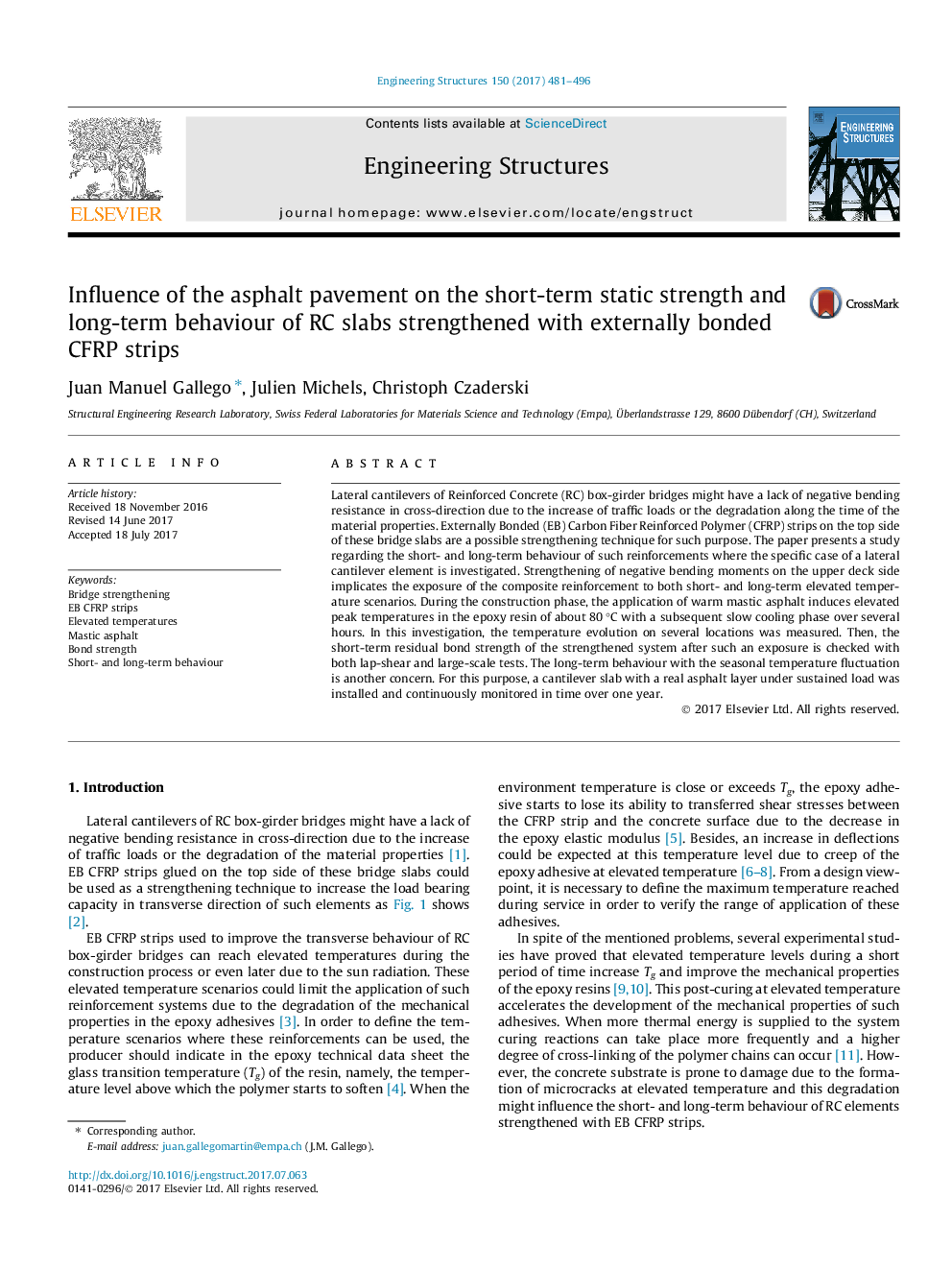| Article ID | Journal | Published Year | Pages | File Type |
|---|---|---|---|---|
| 4919847 | Engineering Structures | 2017 | 16 Pages |
Abstract
Lateral cantilevers of Reinforced Concrete (RC) box-girder bridges might have a lack of negative bending resistance in cross-direction due to the increase of traffic loads or the degradation along the time of the material properties. Externally Bonded (EB) Carbon Fiber Reinforced Polymer (CFRP) strips on the top side of these bridge slabs are a possible strengthening technique for such purpose. The paper presents a study regarding the short- and long-term behaviour of such reinforcements where the specific case of a lateral cantilever element is investigated. Strengthening of negative bending moments on the upper deck side implicates the exposure of the composite reinforcement to both short- and long-term elevated temperature scenarios. During the construction phase, the application of warm mastic asphalt induces elevated peak temperatures in the epoxy resin of about 80 °C with a subsequent slow cooling phase over several hours. In this investigation, the temperature evolution on several locations was measured. Then, the short-term residual bond strength of the strengthened system after such an exposure is checked with both lap-shear and large-scale tests. The long-term behaviour with the seasonal temperature fluctuation is another concern. For this purpose, a cantilever slab with a real asphalt layer under sustained load was installed and continuously monitored in time over one year.
Related Topics
Physical Sciences and Engineering
Earth and Planetary Sciences
Geotechnical Engineering and Engineering Geology
Authors
Juan Manuel Gallego, Julien Michels, Christoph Czaderski,
